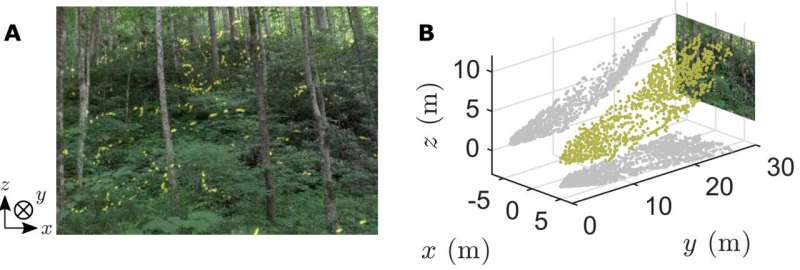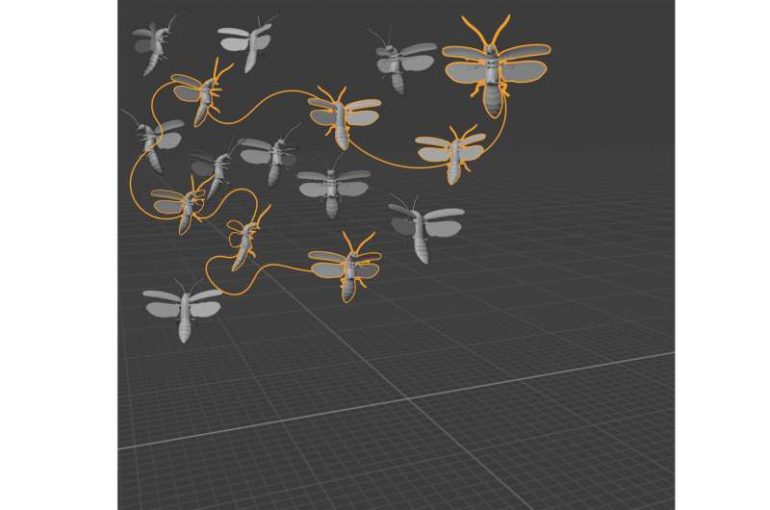A trio of researchers from the University of Colorado Boulder, has found the secret to fireflies flashing in unison: interacting locally through an active network of visual connections. In their paper published in the journal Science Advances, Raphael Sarfati, Julie Hayes and Orit Peleg, describe their study of the glowing insects in the Great Smoky Mountains in Tennessee and North Carolina, and what they learned about them.
For many years, anecdotal evidence has suggested that fireflies sometimes flash their lights in unison—but it was only recently that scientific study of the phenomenon showed it to be true. Fireflies, like some schools of fish, are able to synchronize their behavior. In the case of fireflies, it was noted that the synchronized flashing only seemed to occur when a swarm reached a certain density. In this new effort, the researchers sought to learn more about fireflies hoping to figure out how they were able to manage synchronizing their flashing.
The work by the team involved venturing to the Great Smokey Mountains, a region known for its spectacular lightning bugs displays. To properly capture the flashing by the bugs, the researchers set up two cameras on a well-chosen site, where swarms of fireflies were known to conduct light flashing in unison on a regular basis. The two cameras were positioned in a way to allow for overlap, a means of capturing the action as a three-dimensional video. They also added another two cameras that allowed for capturing the light show from the perspective of the fireflies.
Back at their lab, the researchers merged their camera feeds into a 3D cone that allowed them to see that the flashes originated within one part of the swarm and cascading as a wave through the other members of the swarm—similar, they noted, to how synchronous swimming occurs with some species of fish. They also found that sometimes the synchronous flashing would occur in bursts, with a single individual setting off a chain reaction. The researchers suggest flashing in such ways indicates that the bugs are using line-of-sight as a means of synchronization—one of them sees its neighbor light up, so it does too. They also suggest that more work needs to be done to figure out how the fireflies decide to flash in unison.

Inside the secret lives of synchronous fireflies
More information:
Raphaël Sarfati et al, Self-organization in natural swarms of Photinus carolinus synchronous fireflies, Science Advances (2021). DOI: 10.1126/sciadv.abg9259
2021 Science X Network
Citation:
Fireflies found to interact locally through an active network of visual connections (2021, July 9)
retrieved 9 July 2021
from https://phys.org/news/2021-07-fireflies-interact-locally-network-visual.html
This document is subject to copyright. Apart from any fair dealing for the purpose of private study or research, no
part may be reproduced without the written permission. The content is provided for information purposes only.
